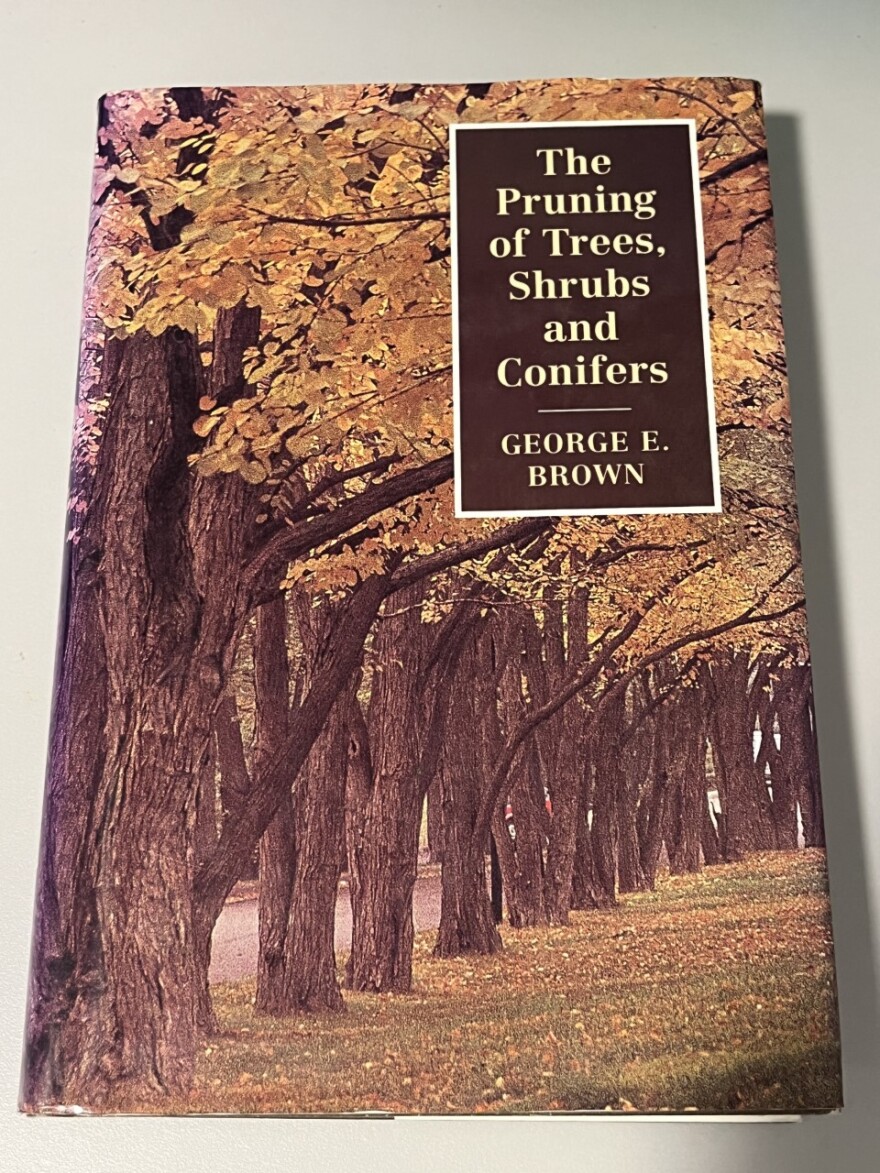I am smiling because February is the time sap begins to flow — causing buds to swell, and early spring bulbs and flowers to bloom.
But inspite of the warming days, do your best to not jump into 'clean the garden' mode too early. We are part of this amazing world, and our actions should reflect that we are part of it, not just in it. This includes being aware of the overwintering insects and other pollinators in the leaf litter and hollow stems of last year’s growth.
Hard as it is to do, please wait for seven consecutive days of 50+ degree Fahrenheit weather before cutting back and raking up the borders and gardens. Waiting will prevent you from interrupting the life cycle of beneficial insects and small critters, which could impact their survival.
If you must do something, cut back the grasses and mow down the Liriope. Prune out the straight-growing water sprouts from trees or shrubs like Star Magnolias and Vitex, then prune the suckers from the base of plants such as Crape Myrtles. Don’t forget to prune the berry bushes and fruit trees, too.
Please leave the leaf litter until later. Instead, carefully cut down old plant stalks and stack them in an out-of-the-way place on site to allow the insects to emerge from within. After the temperatures rise, cut those stalks up and add them to the compost pile — bring them to a community location where they can be recycled to compost or chips. Steps toward sustainability lead us to a healthier ecosystem.

Pruning
Mid-February is Rose Pruning time in central Virginia. With so many roses on the market, it helps to know what type of rose is growing in your garden so you know when — and how — to prune the plant.
- Heritage or Old Garden Roses are pruned after their first flush of bloom in the early summer. These include China, Hybrid Perpetual, Noisette, Bourbons, Tea, Centifolias, Gallicas, Albas, Damasks, Moss, Hybrid Musk, and species type roses.
- Modern Garden Roses are pruned in the late winter while they are still dormant. These include hybrid Tea, polyantha, groundcover, grandiflora, floribunda, shrub, miniature, and David Austin type roses.
- With climbers and ramblers only: Remove dead, diseased, crossing, and damaged canes — nothing more until after they bloom. After bloom time, prune as little as possible and perform directional pruning on climbing/rambling roses. The goal is to direct the cane growth up the structure by pruning to a bud pointing in the direction you want new cane to grow. Remove any canes growing away from the support structure. Keep in mind that climbing/rambling rose canes produce the flowers, so be a minimalist with the pruning cuts. Remember, they are not cut back like other types of roses.
You can watch a step-by-step rose pruning video on VHG’s Facebook page.
Before tackling any pruning project, wise gardeners clean, sharpen, and sterilize their tools with 91% isopropyl rubbing alcohol. Sterilizing pruning tools between plants will prevent the spread of insects or plant diseases. These two steps are standard procedures for all pruning projects.

Stay your sowing hand
While I know it’s difficult to wait, please try your best to not sow seeds too early indoors. Read the seed packet to learn the timeline for each plant you want to start early. Remember to check your lighting system to ensure both red and blue light spectrums are providing the best growing conditions.
Towards the end of the month, the vegetable growing season will begin in USDA zone 7 with the planting of cool weather loving crops like garden peas, onions, spinach, kale, collards, and mustard in the garden. Gardeners in USDA cold hardiness zone 6 will have to wait until early to mid-March to do the same. You can always check your hardiness zone via the USDA’s website.
Before then, make time to care for your soil as much as you do your plants by applying ¼” of compost, leaf mulch, mushroom compost, or other organic matter to feed the soil microorganisms and invertebrates within. Cease tilling the soil to prevent breaking apart the soil food web of fungi vital to soil and plant health. Instead, just scratch the surface to sow seeds like Virginia’s no-till farmers do. Healthy soil rich in nutrients will grow healthy plants with produce that is rich in those same nutrients. This means healthier food for our tables. These simple steps lead to big results. See you in March!
Happy Gardening!
- Peggy Singlemann, landscape consultant and gardening speaker


